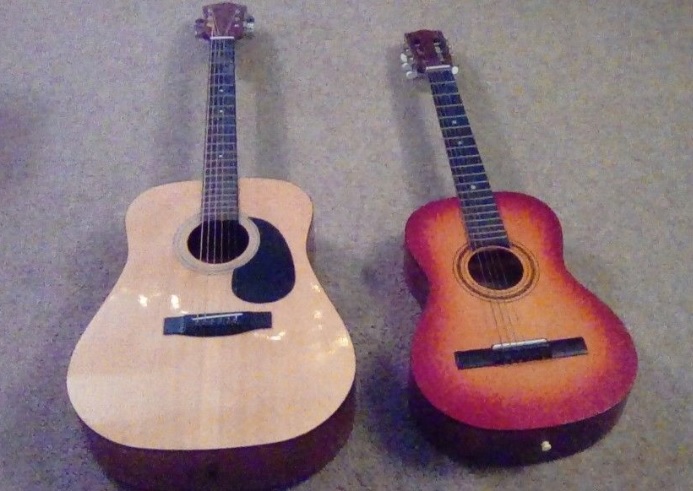
YES! I know I have written about how to go about choosing a guitar, but I am being forced to write about it again with a special focus on children, thanks largely due to the sudden flood of queries from parents.
FOR SMALLER CHILDREN
What size to buy
The ideal age to start learning any instrument would be six years, once the child has attained a degree of motor control. The ideal size for the child would be a smaller guitar – referred to in the guitar industry as a 3/4th guitar. But there is a certain shelf life to the instrument because just as the child outgrows his/her shoes and jumpers, so will he/she outgrow the instrument too.

Not that he/she won’t be able to play the instrument but there are two scenarios here: a) either he/she is so comfortable with the small-sized instrument that he/she finds it rather cumbersome playing a regular-sized instrument, or, b) they are so cramped for room that they are terribly uncomfortable playing the small instrument.
So, the downside of buying a small instrument is that in the end IT HAS TO GO! It might adorn a wall but will be seldom played. If there is a younger sibling/cousin/friend the economics of buying a 3/4th guitar work out that much better.
A word of caution though, A TOY GUITAR IS NOT A 3/4th GUITAR!
What type – steel-string, nylon string or electric?

The steel-string guitar is more for accompaniment – to sing along to – while the nylon-string guitar is more a specialist classical music instrument, meant to sound finger-picked notes that make the basic melody of the song. It is ideal for Western Classical Music.
While the steel-string instrument is generally played with a pick or plectrum – never overruling the fingers – it is a SIN to even lay a pick or plectrum on a classical guitar, which is (or should be) played only by the fingers.

There are basic differences in how the steel-string and the nylon-string guitars are constructed, which dictate the way each is played.
The sound thus produced from a steel-string guitar is happier and peppier, while the sound of the classical guitar is softer, mellower, meant to be consumed personally.
The electric guitar has its own image, personality and points to consider.

In the end, choosing a guitar is for you and the child to decide together.
What price range?
This is something that I leave parents and guardians to decide, for it is they who will have to shell out the moolah. It is not wise to buy a really cheap, or a really expensive guitar; for the simple reason that a cheap instrument may not last your child’s childhood!
Also, it is likely to put off your youngster for various reasons like comfort, sound quality, etc, etc. Never, think that your brat won’t know the difference. They’re into YouTube as much as they are into Cola, and they listen to stuff!
Expensive stuff: not worth it, for, in the end IT HAS TO GO!
It is then wise to walk the middle line and try and find the best instrument that you possibly can in the middle range.
FOR CHILDREN 11 YEARS OR OLDER
Full size! No question about it. Children this age have grown enough to be able to handle a full-size guitar. If they are facing a bit of a problem forming and holding chords, it will disappear within a few months as their hands dial in the ‘stretch’ required to hold chords and shapes.
The more they practise, the more they will acclimatise to the instrument, the sooner their playing will become ‘clean’ (chords and notes ringing out clear).
And if it wasn’t evident from these couple of paragraphs at which age the switch from a 3/4th to a full-size guitar should be made, it is age 11!
And since it is a full-size guitar that you are looking to buy, all the recommendations I made in the earlier piece, become considerations.
Read that piece here:
